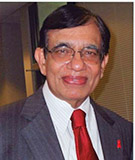
The Science of Organ Transplantation – Part II

KIDNEY DISEASE’S GLOBAL INCREASE CAUSING WORRIES
Kidneys haven’t received the importance they deserve in the media, compared with the heart, lungs and brain. However, that’s all changing.
With the steady increase in kidney failure globally caused by the high prevalence of hypertension and type 2 Diabetes Mellitus, a concerned public is now looking for ways to keep their kidneys healthy. As renal function decreases and chronic kidney disease (CKD) sets in and leads to eventual kidney failure (also called ESRD or End Stage Renal Disease), cardiovascular mortality increases three-fold.
The overall prevalence of CKD in the U.S. general population now is about 14 percent. Plus, more than 661,000 Americans have kidney failure. Many of those undergo dialysis treatment.
About 100,000 people await a kidney transplant, and many must wait for five to 10 years for a new kidney from a deceased donor. Sadly, the waiting list has doubled during the past 10 years.
Prevalence of CKD in India is difficult to assess, but in talking with many kidney specialists there, it’s clear CKD has become much more common among Indians. The prevalence of CKD in India is estimated to be 800 per million population and the incidence of end-stage renal disease is set at 150 to 200 per million. Those statistics are of great concern for Indians.
But let’s get back to the subject of organ transplants to cure organ failure. On Dec. 23, 1954, a landmark event in medicine occurred that would usher in “kidney transplantation” as a viable treatment for kidney failure. Joseph E. Murray and his colleagues at Peter Bent Brigham Hospital (Harvard), Boston, removed a healthy kidney from 23-year-old Ronald Herrick and put it into his twin brother, Richard, who had chronic kidney failure. It was done without immunosuppressive medication and Richard lived another eight years before dying of causes unrelated to his kidney transplant. Ronald, the donor, lived 56 more years.
For that feat Joseph Murray received the Nobel Prize for medicine. And that remarkable event heralded the era of organ transplants to treat organ failure.
The critical issue in organ transplantation is making the recipient’s body accept the donated organ because the body perceives the transplant as a foreign object and tries to reject it. That physiological process is normal and mediated by the immune system. The body considers the donated organ an “antigen” that stimulates an intense “antibody” response. If the antigen-antibody interaction or “rejection reaction” goes unchecked, damage to the transplanted organ occurs and leads to failure of the donated organ.
When Murray did the first transplant, he chose an identical twin to be the donor for obvious reasons: Just as they were duplicates in physical appearance, their internal organs were likely to be a good match as well. In regular clinical practice, though, the recipient isn’t that lucky enough to have an identical twin. Many don’t even have a matching relative.
It took a few more years before organ transplants could become a popular therapy because understanding of the exact nature of the rejection reaction was needed. At that time there were no effective therapies to suppress the serious complication and keep the donated organ viable and functioning.
Initially not enough was known about the immune system. However, Sir Peter Medawar’s pioneering research uncovered knowledge about immune system and the rejection process, and how to control it or at least weaken the immune system so the transplanted graft can survive. The British researcher also won a Nobel Prize for his work.
Soon immunologists and pharmacologists began collaborative research to create effective immunosuppressive drugs. However, with a suitably matching donor the incidence of “rejection reaction” is much reduced. More about the matching process will be in a future column.
To be continued …
M.P. Ravindra Nathan, M.D., is a cardiologist and Emeritus Editor of AAPI Journal. For further reading: “Second Chance – A Sister’s Act of Love” by Dr. Nathan from Outskirts Press can be found at www.amazon.com